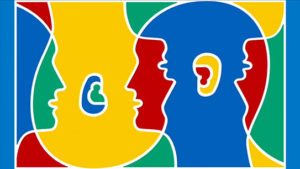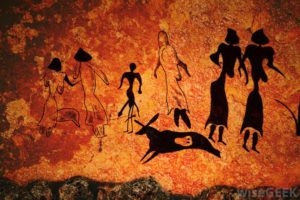“Sapiens” Big Idea #3: Social Skills and Cooperation
The first two big ideas connected our exponential fast move on the food chain, with our brain design that couldn’t adapt. Our rapid evolution left us with fears, tensions, anxieties. This made us overcompensate by being aggressive, dangerous and cruel.
One of the main advantages of humans, that helped us in the competition with other species, was the ability to cooperate. In the survival race, in the jungles from 100,000 years ago, one monkey could defeat one human, by being more agile and better adapted; the same story for ten monkeys versus ten humans.
In large numbers, humans would thrive, against any other species. One of human’ elite trademarks, is the social skill and cooperation. This was developed based on subtle language and believing in common myths. Language besides sharing info about the world (a monkey can do that), had the ability of being conceptual and capable of creating stories.

Mythology was even more important. Tribes clustered themselves based on common emotional perceptions. There are three components:
1. Love Myths, that give the tribe scope and direction;
2. Rational Rules, that help identify the tribe and navigate within;
3. Fear Antagonists/ Common enemies.

Drawings from Paleo Indian Caves
These common beliefs keep the pressure on an united tribe, giving the sentiment of trust and belonging.
Our brain did not changed much. This Triade of Love Myths/ Fear Myths/ Rational Rules, work in the same way today. Just think about Political Marketing and how this Triad is currently applied:
- Let’s Make America Great Again (Love: national pride/ Rational: increase economy, better health/ Fear: threat from muslims, terrorists, losing jobs to immigrants);
- Brexit: (Love: getting the country back/ Rational: better investments in what matters/ Fear: threat from losing jobs and immigrants);
- Romanian 2016 electoral campaign winner (Love: national pride/ Rational: increase salaries and wages/ Fear: threat from multinationals, Soros, foreign interests);
- New political regimes in Hungary or Poland followed the same path.
*****
Yuval Noah Harari “Sapiens”. Language and Social Cooperation.
A monkey can signal danger: menace from land (there is a lion) or from air, (there is an eagle). Our language is more subtle, providing infinite variations from the same sounds. The main differences evolved in how we ended to share info about the world:
- Evolved as a way of gossiping, helping humans evolve like a social animal.
- Can talk about things that were not seen: conceptual, storytelling, and fictions.
- You cannot convince a monkey to give a banana because will have endless bananas in heaven
Social Cooperation: sapiens can socially cooperate in large numbers, flexibly with strangers.
Alpha chimp male in a monkey tribe cooperate through politics. Seeks social harmony but retains resources and spouses for themselves. When 2 alpha males compete, they do with politics building coalition of supporters; is sustained with favours, attentions and intimate contacts. The alpha chimp male wins because leads a more stable coalitions
In the same time, chimp groups are rather small, from 20 to 50. Separate groups do not cooperate and when grows too large, the group splits.
Human tribes grow naturally through gossip and intimate relationship up to maximum 150 people. After this threshold, they do not need rules.
Large number of strangers can cooperate in believing in common myths that exists in common imagination (like religion, political systems, country, money, human rights, what is right or wrong). This have a common emotional perception that unites perspectives.
The mythology is empowered through communication and storytelling in a Triade (Love, Fear, Rational): Love Myths (story, scope, dreams, beliefs, values, rituals), Rational Rules (identification elements, laws, codes) and Fear Antagonists (common enemies). These common beliefs keep the pressure on an united tribe, giving the sentiment of trust and belonging. Works for larger or smaller tribes: counties, companies, teams.
Difficulty lies not in telling a story, but convincing people in the storytelling of an unique Myth. How to convince millions?
In the next Blog, Yuval’s Key idea #4: The Power of Common Beliefs.
*****
